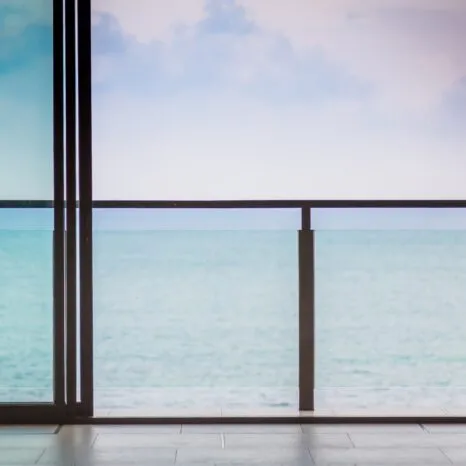
The ideal window for your home, flat or office is first and foremost an airtight window with high thermal insulation values. Therefore, when choosing windows for our building, we practically always check the most important parameters, including how many panes the window has and its heat transfer coefficient.
In the event that these parameters agree, then I am sure that it will be the right choice and we will certainly enjoy warmth even on the coldest days. Nothing of the sort, however, because just as important as the parameters of the window is its correct installation. It is the flawless installation that decides on our further use of the window joinery. If it is carried out in the wrong way, even the most expensive window with the best properties on the market will lose its qualities, and we will have to overpay on heating.
Unfortunately, there are fitters on the market who do not always know their trade and therefore do not do the job properly. However, in order to assess the work correctly, we should know what to look out for. That is why we present below a short guide where we will address the most important issues related to the correct installation of windows.
Correct window installation – or what kind of window installation
The concept of correct window installation is not clear-cut. Actions that worked 10 years ago may not be the case today. Compliance with the art of construction changes along with technological progress or legal regulations.
Every year, more and more modern installation materials are used. The standards for heat transmission and the wall materials themselves are also changing, which ultimately affects the way windows are installed. For example, the glazing on the market is getting heavier and heavier. For this reason, anyone specialising in window installation should undergo regular training so as not to make mistakes and to work in accordance with current building practices. Currently, window installation can be divided into two basic types:
- Primary installation, which is where windows are first installed in a newly constructed building. It is therefore the final stage of closing the shell. This type of installation is also much simpler because we have a building site where we have open walls and full access. There is also virtually no chance of damaging anything. The situation is slightly different for the second type of assembly…
- Secondary installation, which involves replacing the currently existing windows in the building. This is when every building owner expects the replacement to be done in a quick and robust manner, which unfortunately is often not conducive to accuracy. In addition, we have to be careful with existing walls or buildings so as not to damage anything.

Heat installation – is it necessary?
A few years ago, it became very fashionable to carry out so-called warm installation, which is particularly required for energy-efficient windows. In their case, it is very important to carefully seal the window frame in order to eliminate any thermal bridges through which warm air can escape. To this end, the surface of the opening is carefully levelled before installation, and up to three layers of insulation are used for sealing. The first, vapour-permeable tape, protects the insulation from the weather. The second layer, the middle layer, is usually polyurethane foam, which is placed between the window and the frame. Finally, the third layer, the vapour-proof membrane, is designed to protect the foam from moisture.
This type of installation is called warm installation for a reason, as when done well it really does provide a great deal of heat energy savings.
Installation of security windows
Before we move on to discuss the most common errors in window installation, it is worth touching on the aspect of burglar-proof window installation. This is because it differs from the installation of normal window frames. Burglarproof windows must be installed in accordance with the stringent European standard EN-V 1627-30, which specifies parameters such as the type and size of dowels, the distance between them and the depth of the anchors.
If the conditions specified in the aforementioned standard are not met, the window itself will not fulfil the safety certificate. It is therefore important to employ a proven installation team recommended by the manufacturer for the installation of this type of window. An appropriate guarantee document should also be issued after the work has been carried out.

What are the most common mistakes made when installing windows?
We have already discussed the types of window installation, it’s time to finally focus on the most common mistakes that we should pay special attention to. Among the main mistakes we can include, first of all:
Inaccurate planning of window installation
Proper planning of the window installation process is as important as the installation itself. After all, choosing the right moment to place the joinery, both windows and doors, is of vital importance. Particularly in the case of wooden windows, it is advisable to carry out this operation after the completion of works such as the pouring of floors and the application of plaster inside the building. In addition, if the external walls are to be insulated, it is advisable to install the windows before this process starts.
Furthermore, it is worth considering at the design stage whether the installation of external blinds is our intention. Some types of roller shutters, such as overhead shutters, require the window opening to be widened by the size of the box, which in turn depends on the size of the roller shutter.
Inadequate preparation of window openings
Failure to adequately prepare window openings is a mistake that happens relatively often and is easy to spot at earlier stages, provided you know the relevant criteria. It is important that the window openings are properly prepared not only for the window installation itself, but also beforehand to measure the window installation site accurately.
The preparation of the reveals mainly involves levelling their surface. They should be flat, free of irregularities, gaps and cracks. Any such imperfections can cause difficulties during proper installation, especially when it comes to gluing the sealing film tightly. It is also recommended to check the evenness of the bottom edge on which the window rests. Correct installation requires it to be perfectly even. Finally, the walls should be measured for flatness and verticality.
Inaccurate jamb measurements
Inaccurate jamb measurements are another common error during window installation, involving the placement of windows that are too small or too large in relation to the jamb. This is usually due to inadequate previous measurements.
The jamb measurements should be taken after the edges and substrate have been levelled, but before the external walls have been plastered. These measurements should not be taken before levelling, as changes in dimensions can occur during this process, even to the millimetre level, which can be significant. Measurements should be taken with a tape measure and spirit level, covering both the external and internal reveal. In addition, make sure that the angles of the window opening are actually straight.
To ensure proper window installation, choose models that are slightly smaller than the jamb, leaving a small gap in case of distortion due to temperature fluctuations.
It is also worth considering that the correct gap width between the window frame and jamb depends not only on the length of the jamb, but also on the type of window, such as timber, PVC or aluminium. For wooden windows, a smaller gap is usually recommended.
Mounting windows on a dirty surface
Installing a window on a soiled substrate is a common mistake made by inattentive installation teams. It is one of the most serious omissions when installing windows, but it is also easily avoidable. Before placing the window in the reveal, it is necessary to clean the substrate thoroughly. Dust or plaster residue left on the reveal can result in leaks. If the foam is spread over a dirty substrate, it will not hold sufficiently, which can lead to subsequent air leaks. In addition, dirt absorbs moisture.
Incorrect installation – without fasteners or sill strips
Another mistake during window installation is improper fitting, i.e. placing windows without sill strips or fasteners. An inexperienced fitter may try to fit the window directly into the reveal, omitting the sill strips. However, the absence of these elements will make it much more difficult to install the sill later and may lead to water leaks in the future, which in turn are associated with moisture inside the building, as well as potential leakage at the joints. Installing a window without support blocks can in turn lead to deformation of the window frame on the masonry or thermal insulation, which in turn can cause cracks in the plaster.
Installing a window frame requires the use of special tools such as anchors, screws, bolts or dowels, depending on the wall material. The correct choice of tools is crucial for the durability of the installation. The fixing points should be spaced at the right distances and the number should be adapted to the type of window. This will be different for PVC windows, aluminium windows and still different for timber joinery.
Incompatible window sealing
Substandard window sealing is a common mistake that often occurs during the installation process. Effective sealing, on the other hand, is crucial for full protection against moisture. A fundamental principle when carrying out the sealing process is that the tightness should be greater on the inside than on the outside. Ideal sealing, as mentioned in the previous paragraphs, consists of three layers: the inner layer (the use of sealing tapes, which prevent air and vapour movement), the middle layer (the use of foam, which insulates both thermally and acoustically) and the outer layer (the use of impregnated layer tapes or expansion tapes). A window installation that includes comprehensive sealing is referred to as ‘layered’ (sometimes the term ‘warm installation’ is also used, although technically this is not an accurate term).
The use of foam as a stand-alone sealant is not a mistake, especially if you do not opt for a layered window installation. Foam can provide satisfactory results, provided the installation team shows care in the application process.
Safety film
Finally, we cannot fail to mention the most trivial mistake, but one that can ultimately be a major inconvenience for us, mainly visually. We are talking about leaving the protective film behind. In this case, it is worth bearing in mind that the removal of the protective film should be avoided both before and immediately after the installation of the windows. This is because the correct procedure assumes that the protective film should remain on the windows during the installation process itself and during construction and renovation work inside the house, such as the application of external plastering.
Its premature removal can lead to scratches or stains that are difficult to remove. On the other hand, if the film is left on the window for too long, it can become much more difficult or even impossible to remove due to the effects of the weather. It is therefore recommended that you dispose of the protective film within one month (maximum two months) of completing the window installation process.


















